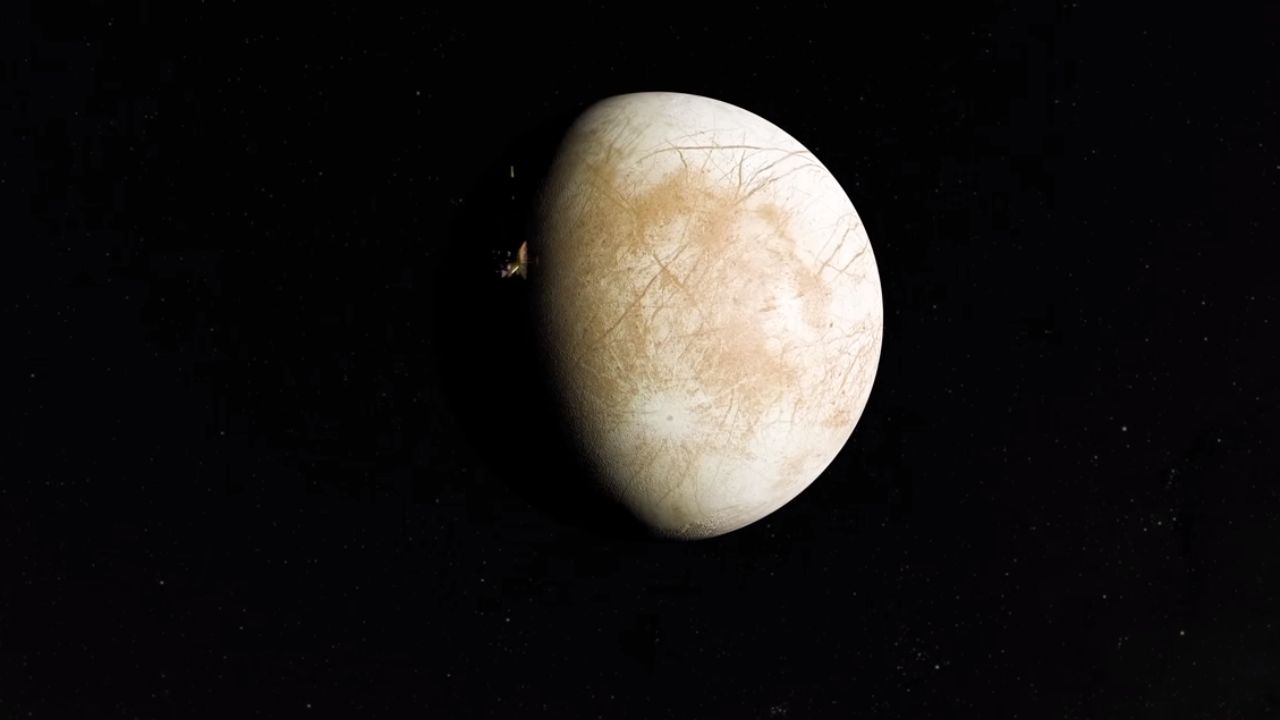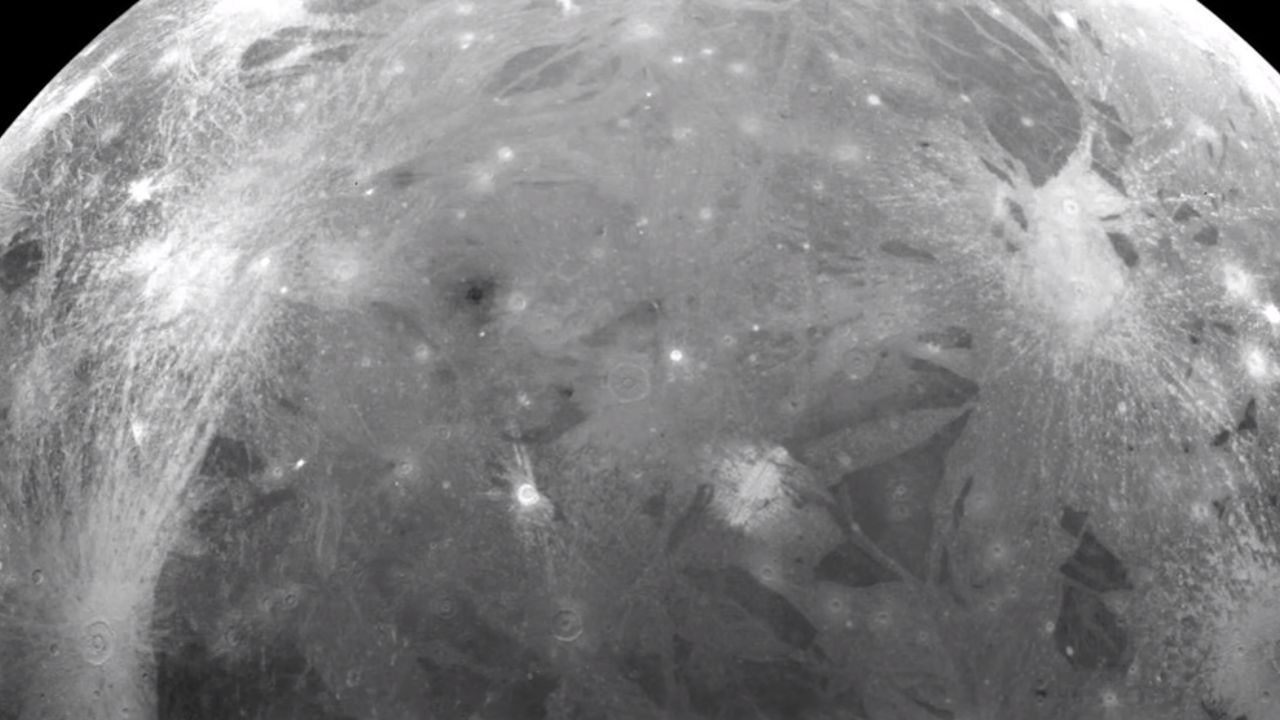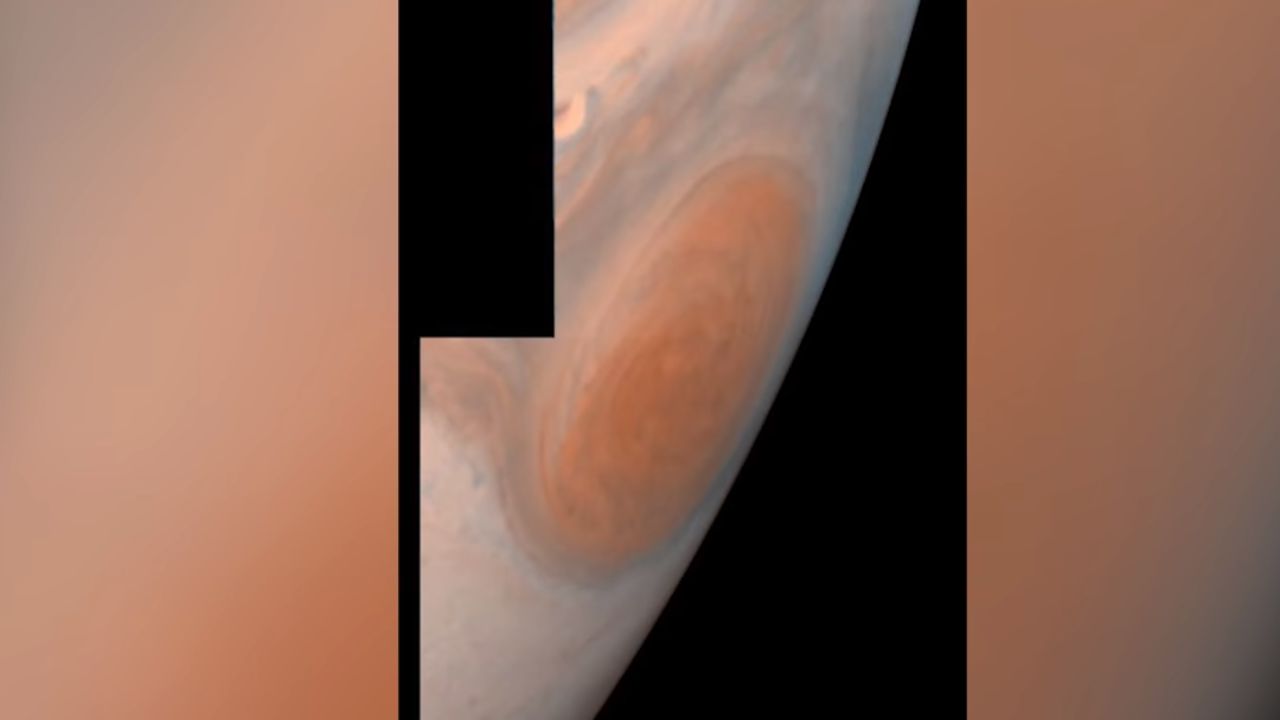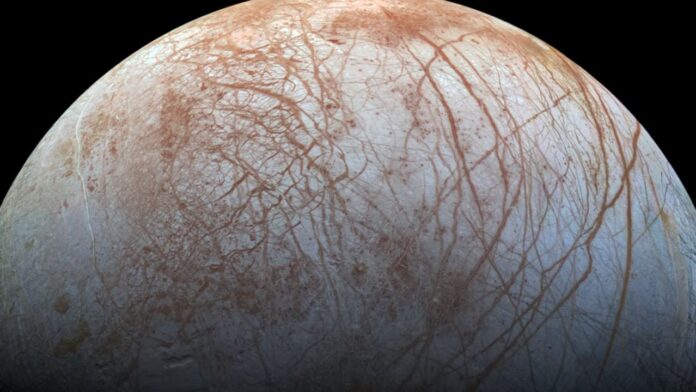NASA and astronomers have raised intriguing suspicions about a moon that orbits Jupiter. They believe that this celestial body may contain an enormous ocean, with estimates suggesting its depth could range from 65 to a staggering 180 kilometers.
Recent observations made by the advanced James Webb Space Telescope have unveiled a noteworthy discovery on Europa, one of Jupiter’s moons. Specifically, scientists have detected the presence of carbon dioxide on a portion of Europa’s surface—a crucial component for life as we understand it.
It’s important to clarify that this finding does not serve as definitive evidence for the existence of life on Europa, and it’s essential to avoid premature conclusions. However, this discovery does enhance the allure of Europa as a target for future exploration, igniting curiosity about the potential for life beyond our home planet.
On the icy crust of Jupiter’s moon Europa, Webb has discovered carbon dioxide that likely originated in the liquid water ocean below. Understanding the chemistry of this ocean could help determine if it is a good place for life as we know it: https://t.co/tGLrJrVsyl pic.twitter.com/4C4JjZMCBw
— NASA Webb Telescope (@NASAWebb) September 21, 2023
Great Discovery of Our Time
“We now have strong observational evidence suggesting that the carbon we’ve identified on Europa’s surface originates from its subsurface ocean. This discovery holds significant importance as carbon is a fundamental element for biological processes,” stated Samantha Trumbo, a planetary scientist at Cornell University, who conducted an analysis of the James Webb Space Telescope data.
Despite being hundreds of millions of kilometers away from Earth, NASA has ambitious plans to explore Europa more extensively. In 2024, the space agency intends to launch the Europa Clipper mission, with the primary objective of investigating whether there are regions beneath the icy surface of Jupiter’s moon Europa that could potentially support life. This mission will involve numerous close encounters with the moon, allowing for the collection of unprecedented data.
The brackish sea beneath Europa’s icy crust presents conditions that might be conducive to life, although the question of whether it could host primitive life forms remains a topic of ongoing exploration and research.
So Thanks, James Webb Telescope
The James Webb Space Telescope, born from a collaborative effort between NASA, the European Space Agency, and the Canadian Space Agency, boasts a primary mission of delving into the profound mysteries of the cosmos and shedding fresh light on the distant origins of our universe. However, its capabilities extend beyond the realm of deep space exploration. The telescope is also actively engaged in studying captivating planets within our Milky Way galaxy, and it has cast its watchful eye upon the planets and moons within our very own solar system.
An insightful piece at Mashable has outlined the remarkable achievements of the James Webb Telescope, and its potential to continue revolutionizing our understanding of the universe for decades to come. Here are some of the key factors that make it an exceptionally powerful tool:
Giant Mirror
The James Webb Space Telescope features an impressive light-capturing mirror that stretches over 6 meters in diameter. This substantial mirror dwarfs the one aboard the Hubble Space Telescope, being two and a half times larger. The advantage of this larger mirror is its ability to capture an abundance of light, enabling Webb to peer deeper into space and observe objects that are both more distant and considerably older.
This remarkable telescope has the capacity to study stars and galaxies that came into existence over 13 billion years ago, a mere few hundred million years after the momentous event known as the Big Bang.
Infrared View
In contrast to the Hubble Space Telescope, which primarily captures visible light, the James Webb Space Telescope is predominantly an infrared telescope. This specialization in the infrared spectrum broadens our observational capabilities, granting us access to a wider swath of the universe. Infrared light boasts longer wavelengths compared to visible light, which enables it to traverse cosmic clouds more effectively. In such dense particle-packed environments, infrared light encounters fewer collisions and less scattering. Consequently, Webb’s infrared vision can venture into regions that Hubble, with its visible light focus, cannot reach.
Observing Distant Exoplanets
The James Webb Space Telescope is equipped with a specialized tool known as a spectrometer, poised to usher in a profound transformation in our comprehension of these remote celestial bodies. These instruments have the remarkable capacity to decipher the presence of various molecules, including substances like water, carbon dioxide, and methane, within the atmospheres of distant exoplanets. Whether these exoplanets are massive gas giants or more compact rocky worlds, Webb’s spectrometer will be our eye in the sky, examining exoplanets within our Milky Way galaxy. The tantalizing prospect lies ahead: what mysteries will we uncover as we peer into these distant realms?
Astronomers have achieved significant breakthroughs, including the discovery of captivating chemical reactions occurring on a planet situated a staggering 700 light-years from us. Furthermore, the observatory has commenced its observations of one of the most eagerly awaited destinations in the cosmos: the Earth-sized rocky planets found within the TRAPPIST solar system. These observations promise to unveil exciting insights into these distant celestial bodies.


















![10 Countries With the Best Healthcare in the World [Statistical Analysis] Countries With the Best Healthcare in the World](https://articleify.com/wp-content/uploads/2025/07/Countries-With-the-Best-Healthcare-in-the-World-1-150x150.jpg)










